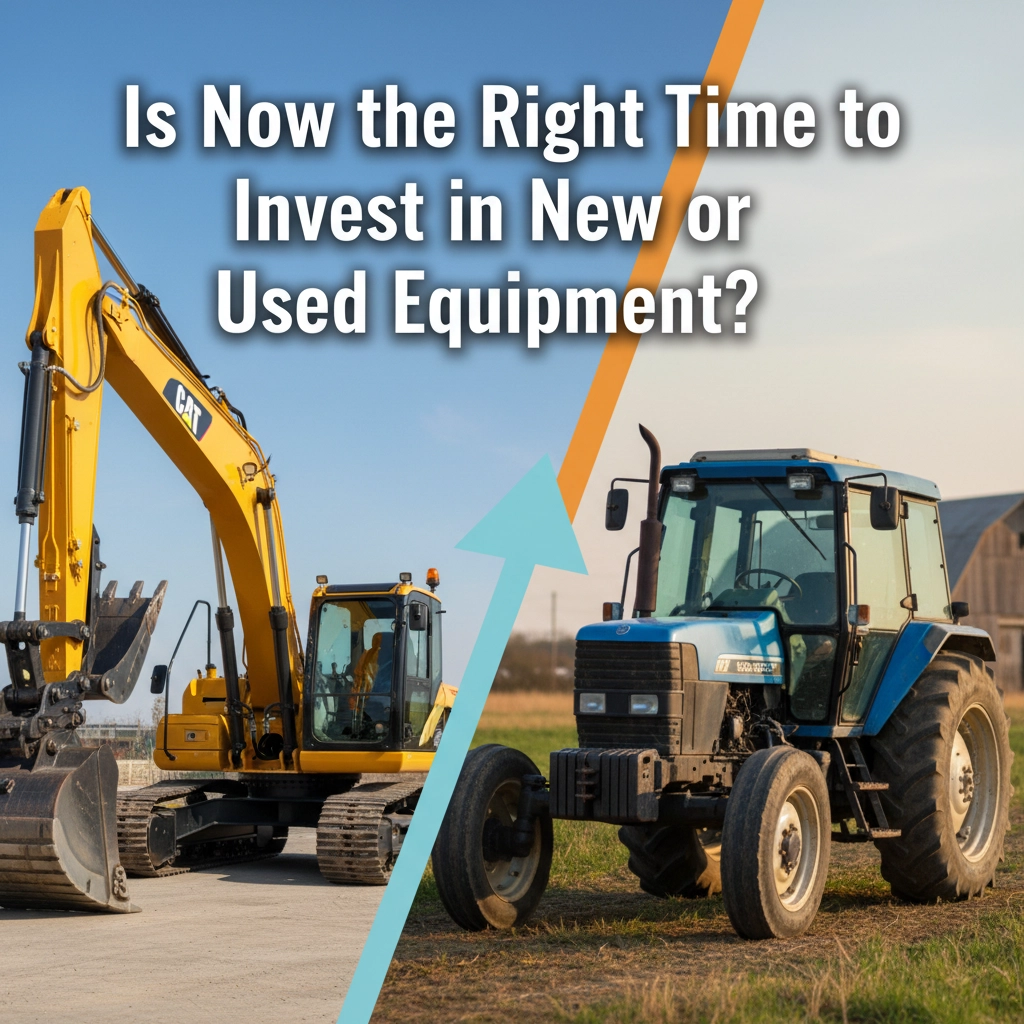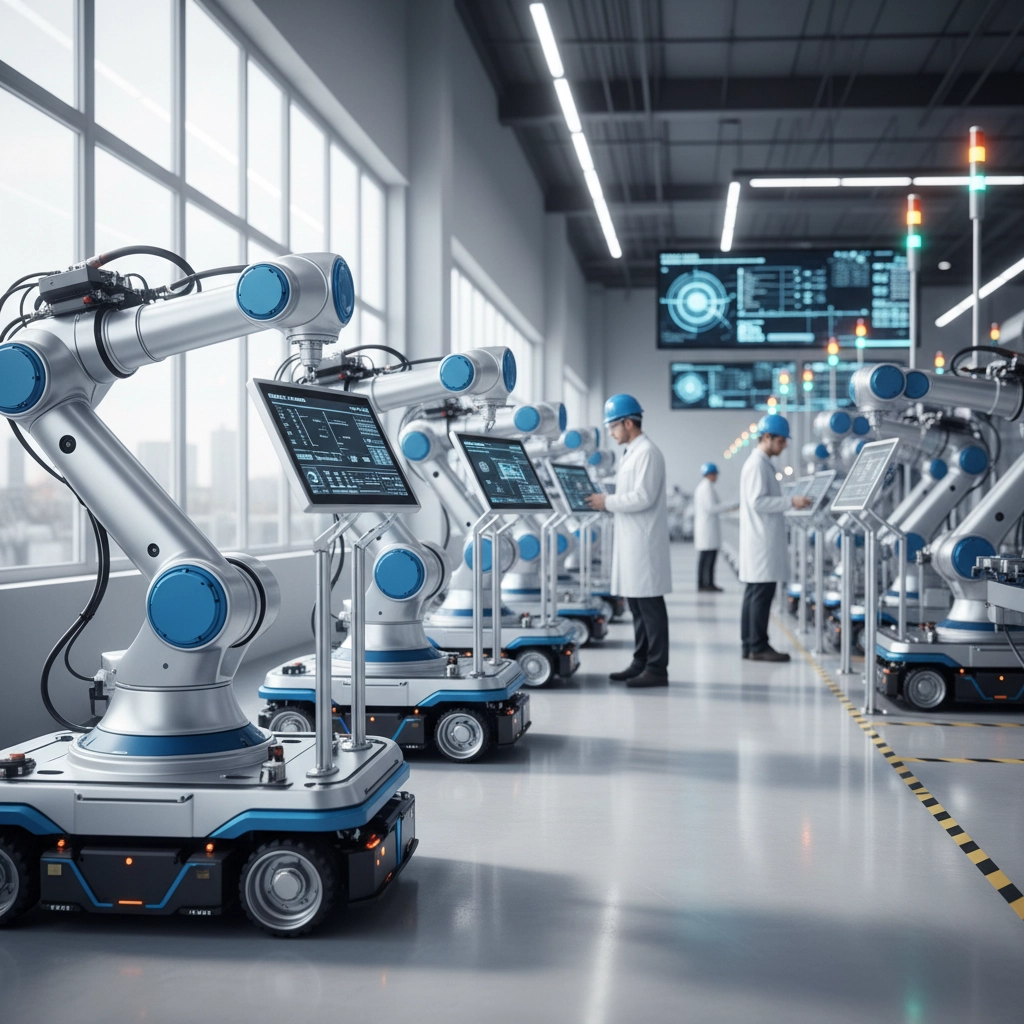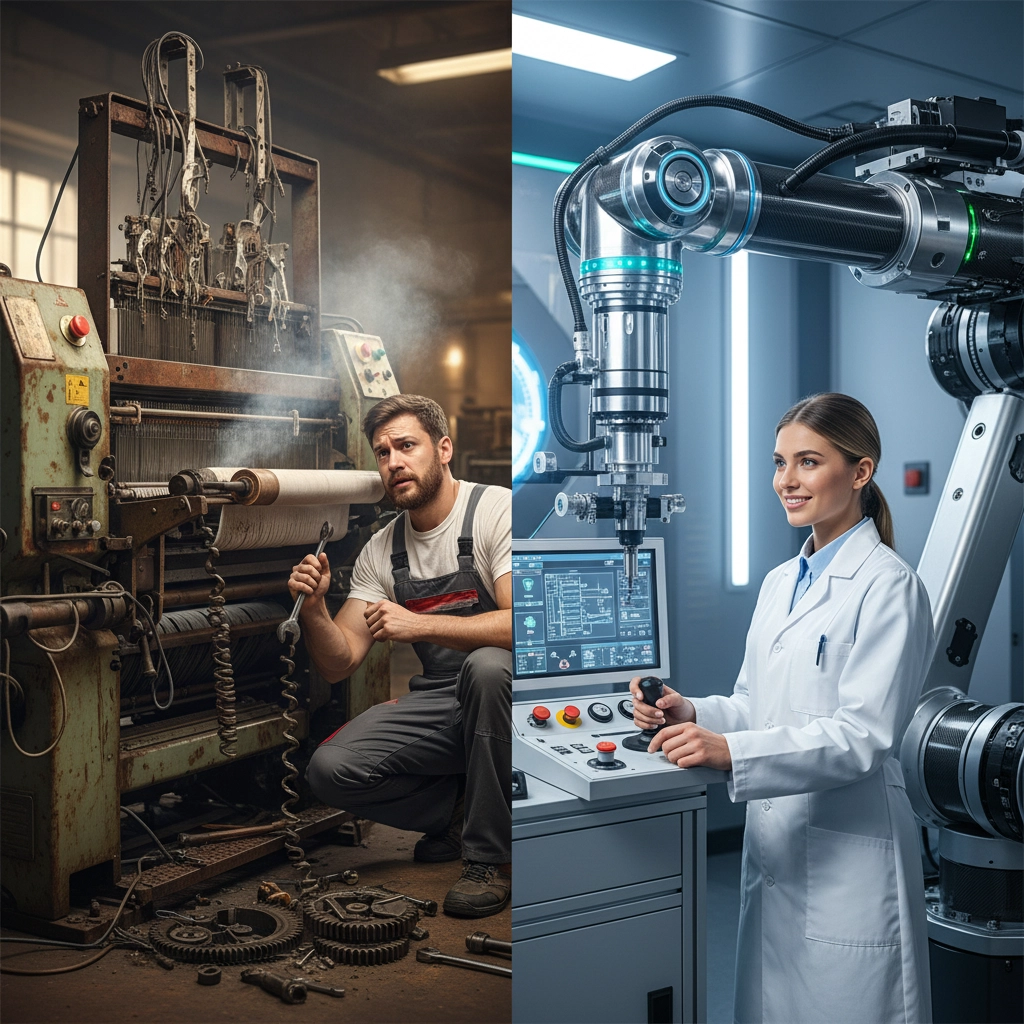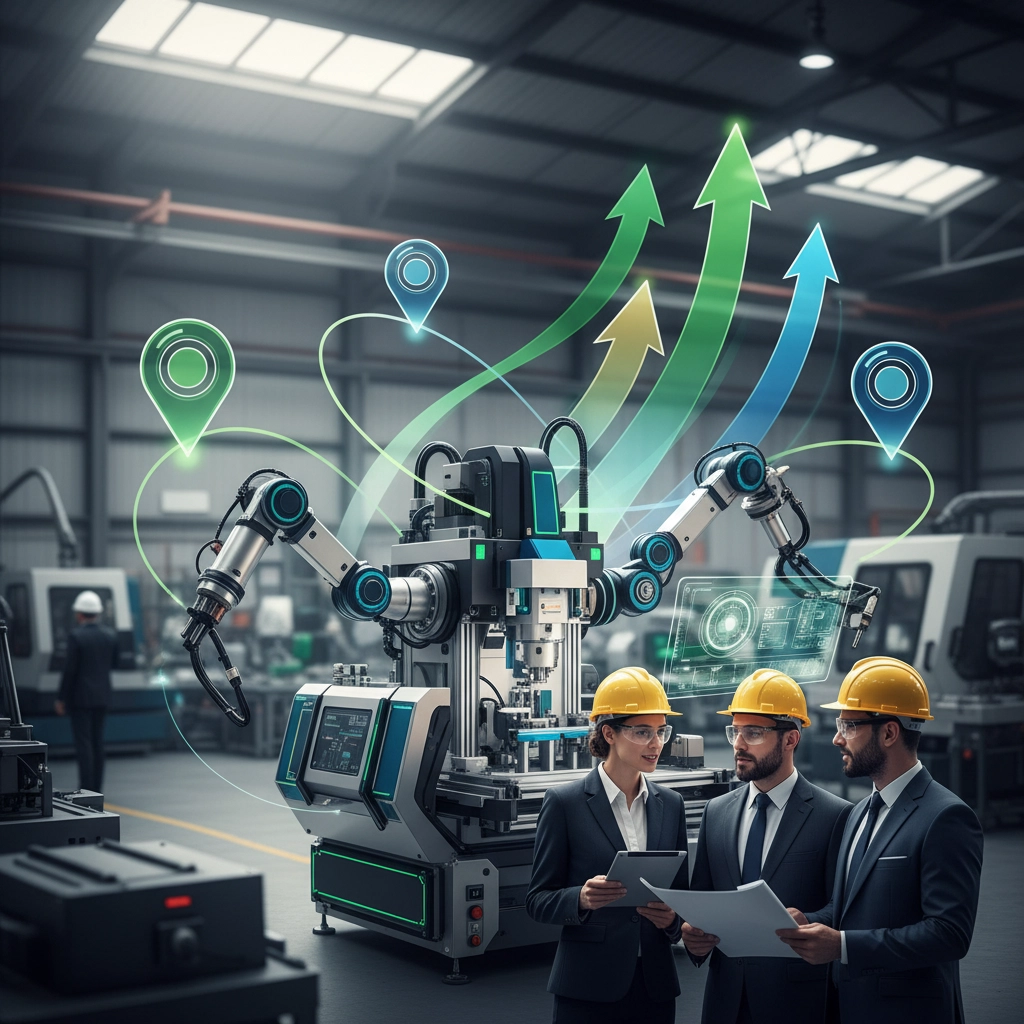You've been staring at that aging piece of equipment for months now, haven't you? The one that makes that weird grinding noise, takes twice as long as it should, and seems to break down every time you have a big deadline. Meanwhile, you're wrestling with the age-old business question: Is now really the right time to invest in new or used equipment?
Here's the short answer: If you're asking the question, the answer is probably yes. But let's dig deeper into why finishing 2025 strong and setting up your 2026 game plan now might be the perfect storm for equipment investment.
The Stars Are Aligning for Equipment Investment
The economic tea leaves are looking pretty favorable right now. Equipment and software investment is projected to expand by a whopping 9.9% in 2025, while overall U.S. capital expenditures are expected to rise 4.7%. Translation? You're not alone in thinking this is a good time to upgrade.
Interest rates are on a downward trend, which means financing that shiny new piece of equipment won't cost you an arm and a leg. Plus, 42% of businesses surveyed expect their equipment acquisitions to increase over the next 12 months. That's not just optimism, that's businesses putting their money where their mouth is.
But here's what really matters: Equipment prices have stabilized, and in many cases, they're actually declining slightly. It's like the equipment gods decided to throw us a bone after years of supply chain chaos and inflation madness.
The Hidden Truth About Equipment Investment
Let's address the elephant in the room. You're probably thinking, "Great, another monthly payment to worry about." But here's where most business owners get it completely backward. That new equipment isn't just a payment, it's a profit center wearing work boots.
Think about it this way: Your current equipment (or lack of the proper equipment) is costing you money every single day. Not just in maintenance and repairs (though those add up faster than calories at a buffet), but in lost productivity, missed opportunities, and frustrated customers who are getting subpar service.
When you upgrade your equipment, several magical things happen:
Your productivity skyrockets. Modern equipment works faster, more efficiently, and breaks down less often. What used to take your team four hours now takes two. That's not just time saved, that's capacity doubled.
Your overhead actually decreases. Yes, you read that right. Newer equipment typically uses less energy, requires fewer repairs, and operates more efficiently. While you might have a new payment, your operational costs often drop enough to offset much of that expense.
You can offer better services. This is where the real money lives. Better equipment means you can take on jobs you couldn't before, deliver higher quality work, and charge premium prices for premium results.
The Customer Retention Goldmine
Here's something your accountant might not tell you: Customer retention is worth its weight in gold. When you can deliver better, faster, more reliable service because of your equipment upgrade, customers notice. And happy customers don't just stick around: they become walking advertisements for your business.
Better equipment leads to:
- Faster turnaround times
- Higher quality output
- More consistent results
- The ability to take on larger or more complex projects
- Happier employees
All of this translates directly to increased sales and higher profit margins. Suddenly, that equipment payment doesn't look like an expense anymore: it looks like the best investment you've ever made.
New vs. Used: The Eternal Equipment Debate
Now for the million-dollar question: Should you buy new or used equipment? The answer depends on your specific situation, but 2025 offers compelling arguments for both sides.
The Case for New Equipment:
- Latest technology and features
- Full warranty coverage
- Maximum productivity gains
- Access to modern automation and AI integration
- Better financing terms and incentives
The Case for Used Equipment:
- Costs 20-50% less than new
- Less depreciation hit
- Excellent availability of 3-5 year old equipment
- Still offers significant productivity improvements over older machines
- Lower insurance costs
Here's a pro tip: There's a sweet spot in the used equipment market right now. Lots of quality 3-5 year old equipment is hitting the market, giving you the best of both worlds: modern features at used prices.
The Growth Equation That Changes Everything
Let's talk about the growth multiplier effect. When you invest in better equipment, you're not just buying a machine: you're buying the ability to:
Handle more volume. Faster, more efficient equipment means you can take on more projects without hiring additional staff.
Expand your service offerings. New capabilities often mean new revenue streams you couldn't access before.
Hire strategically. Instead of hiring people to compensate for slow equipment, you can hire people to grow your business.
Open new locations. Expansion brings real headaches like leases, permits, build-outs, staffing, and cash flow swings. Proven systems and efficient equipment make it manageable. Better yet, plan to hire strong managers early so locations can run without you, giving you more time off and a better quality of life. Use each new site to build transferable value and start an exit plan now, so you're positioned for an eventual sale and retirement on your terms.
This creates a beautiful cycle: Better equipment → Higher productivity → More revenue → Ability to invest in growth → Even more revenue.
The Smart Money Move: Finance Before You Shop
Here's where most business owners make a critical mistake. They fall in love with a piece of equipment, negotiate a price, and then scramble to figure out financing. That's like going grocery shopping when you're hungry: you're guaranteed to make poor decisions.
The smart play? Get your financing lined up before you start shopping. When you know exactly what your monthly payment will be and what you can afford, you can negotiate from a position of strength. You're not uninformed; you're prepared.
This is where having a conversation with Simplified Capital before you start equipment shopping becomes invaluable. We can help you understand your financing options, preset your terms, and give you a clear budget to work with. No surprises, no last-minute scrambling, and no settling for equipment that's not quite right because it's all you can afford to finance.
Making the Numbers Work
Let's get practical for a minute. How do you know if an equipment investment makes sense? Here's a simple framework:
- Calculate your current equipment costs (maintenance, repairs, downtime, lost productivity)
- Estimate the productivity gains from new equipment
- Factor in the new revenue opportunities the equipment creates
- Add up your total monthly savings and new income
- Compare that to your monthly equipment payment
If the savings and new income exceed the payment, congratulations: you've just found a profit center disguised as an expense.
But don't forget the intangibles: reduced stress from equipment breakdowns, improved employee morale from working with better tools, and the confidence that comes from knowing you can deliver on your promises (and future promises) every time.
The 2025 Advantage: Timing Is Everything
Several factors make 2025 particularly attractive for equipment investment:
Technology Integration: AI and automation are becoming standard features, not luxury add-ons. Investing now means you're getting tomorrow's technology at today's prices.
Supply Chain Stability: Remember the equipment shortages of 2021-2022? Those days are behind us. Availability is good, delivery times are reasonable, and you actually have choices again.
Competitive Advantage: While some of your competitors are still debating whether to invest, you can steal market share by delivering superior service with superior equipment.
Tax Considerations: IRS Section 179 may allow you to deduct up to the full purchase price of qualifying equipment in the year it's placed in service, often even when financed. Place eligible equipment in service by 12/31/2025 to potentially capture a meaningful deduction. Bonus depreciation may also apply to any remaining amount. Talk with your CPA to confirm what's available for your situation, but the headline is simple: acting before year-end can lower your net cost.
The Bottom Line: Investment, Not Expense
If you're thinking about upgrading or adding new equipment, chances are it won't be a payment: it's an investment in your company's growth and future. Finish 2025 strong and set the pace for 2026 by making those moves now. The question isn't whether you can afford to invest in new equipment; it's whether you can afford not to.
Your competitors are making equipment investments. Your customers expect better, faster, more reliable service. Your team deserves tools that help them succeed, not fight them every step of the way.
The economic conditions are favorable, financing terms are improving, and the equipment market offers excellent options for both new and used purchases. All the pieces are in place: the only question left is whether you're ready to pull the trigger.
Ready to explore your equipment financing options? Before you start shopping for that new equipment, let's have a conversation about your financing options. At Simplified Capital, we can help you preset your terms and understand your budget, so you can negotiate from a position of strength.
Contact Simplified Capital today:
Phone: (866) 810-1305
Email: info@simplifiedcapital.com
Website: www.simplifiedcapital.com






